Abstract
The effect of prolonged administration of alcohol on mitochondrial function and high-energy phosphate (ATP) of heart muscle was investigated in dogs. Animals were divided into two groups, a control group and a group that received alcohol. In the experimental series, dogs received 400 ml of a 25% solution of alcohol added to the food and drinking water. Measurements were carried out after ethanol had been withheld for 2 days. Total myocardial blood flow, cardiac output, and myocardial O2 consumption remained at control levels. Measurement of cardiac contractility using the maximal rate of left ventricular pressure rise (dP/dtmax) showed no change in animals exposed to alcohol. When the afterload of the heart was increased with angiotensin, a slight but not significant decline in cardiac contractility was observed. Activities of various intramitochondrial and extramitochondrial enzymes were measured in both groups. After alcohol administration, the primarily intramitochondrial isocitrate dehydrogenase diminished. ATP in heart muscle of dogs exposed to alcohol declined, and mitochondrial oxygen consumption and respiratory control indices diminished. These observations suggest that the primary lesion leading to alteration of myocardial performance is a biochemical malfunction of the mitochondria, which at this early stage is not reflected in changes in myocardial contractility.
Full text
PDF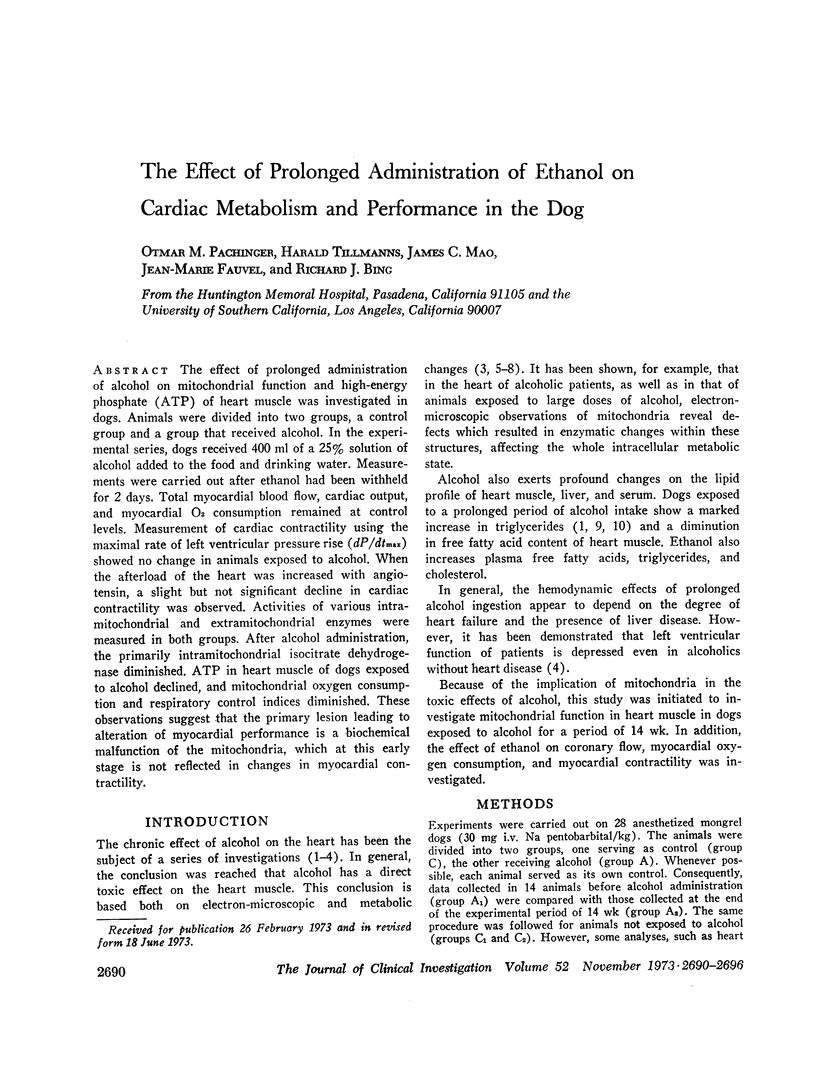
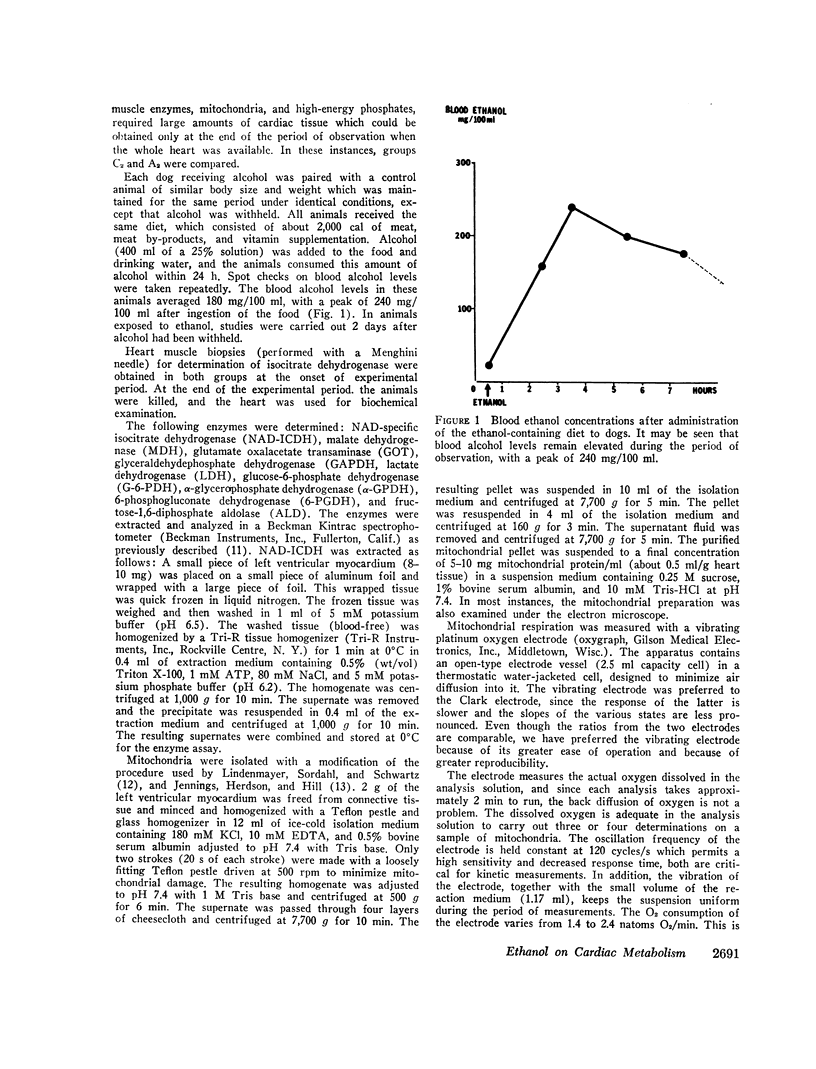
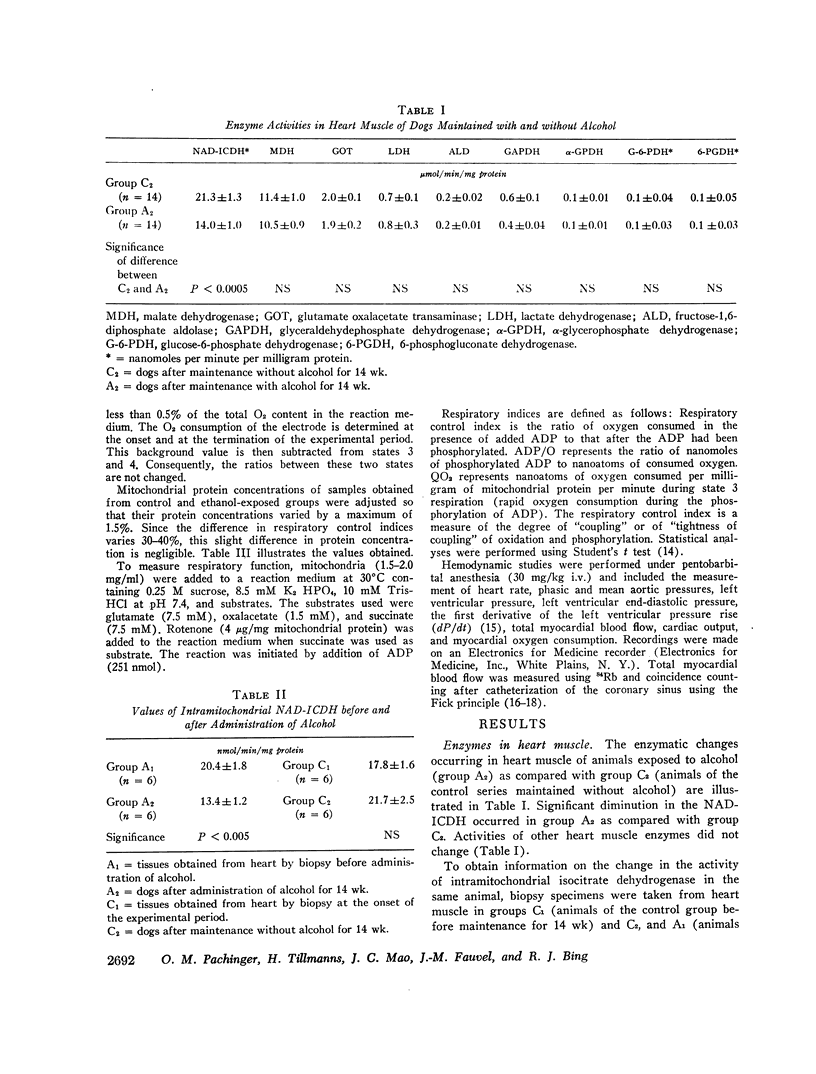
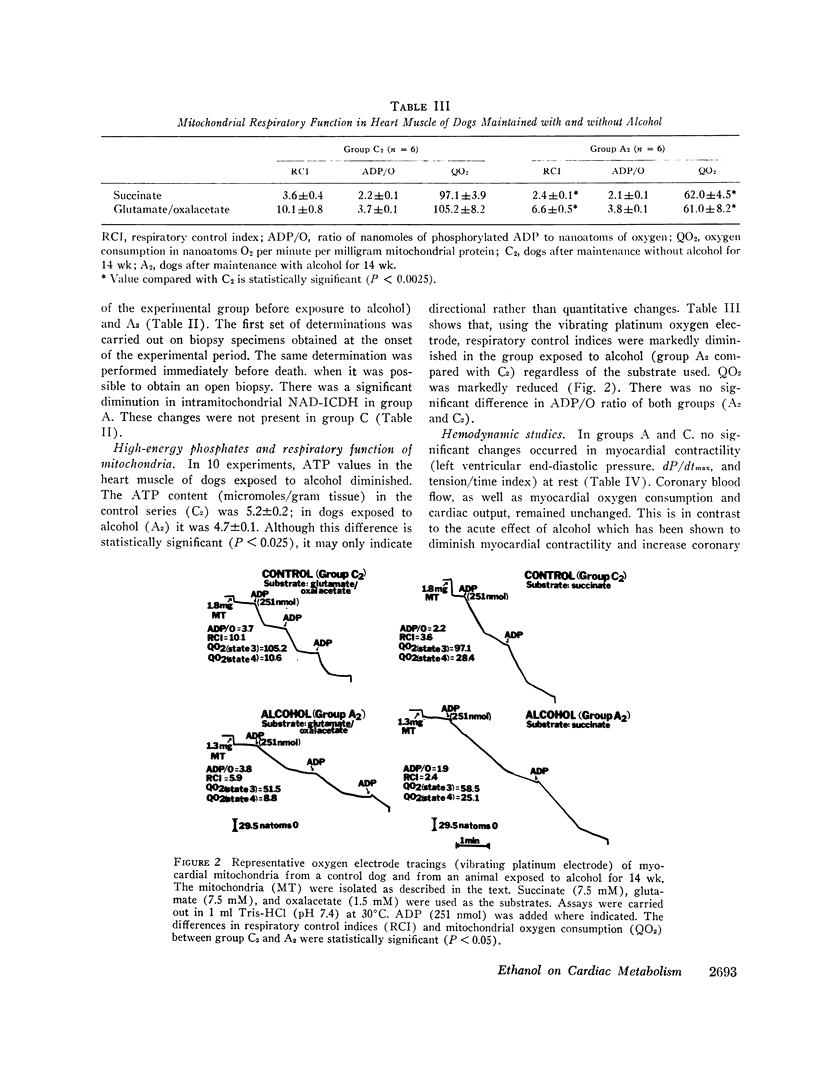
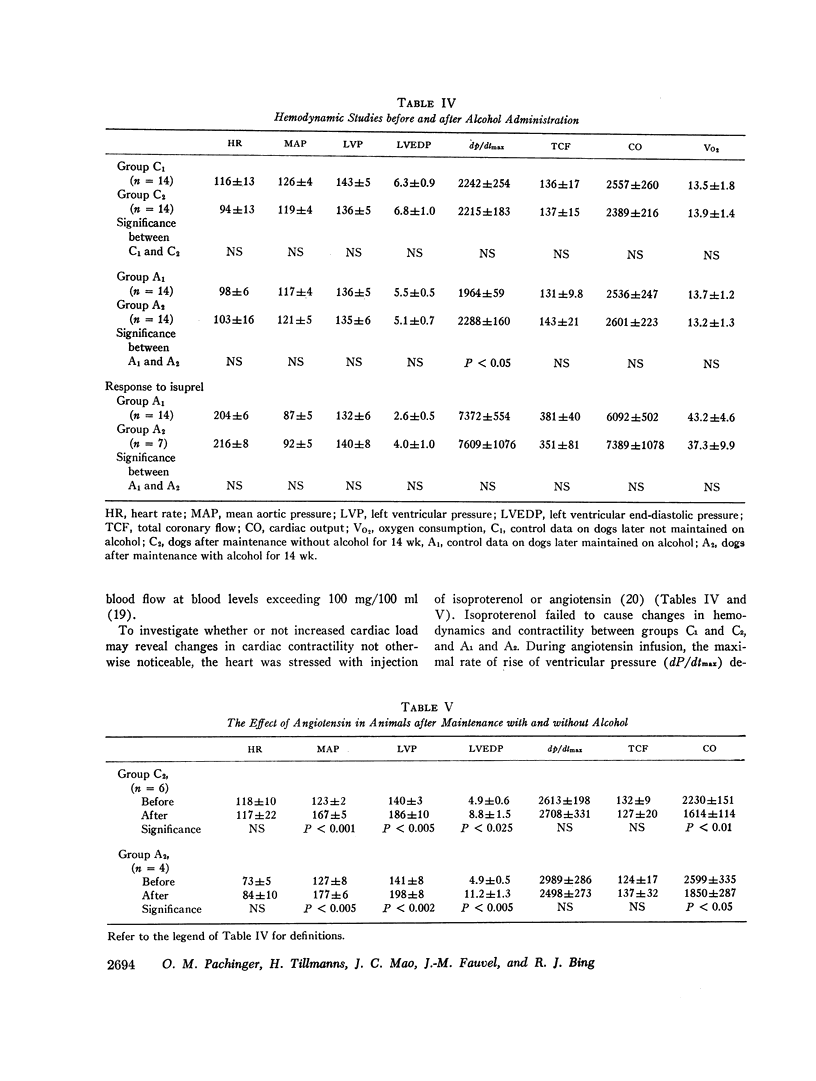
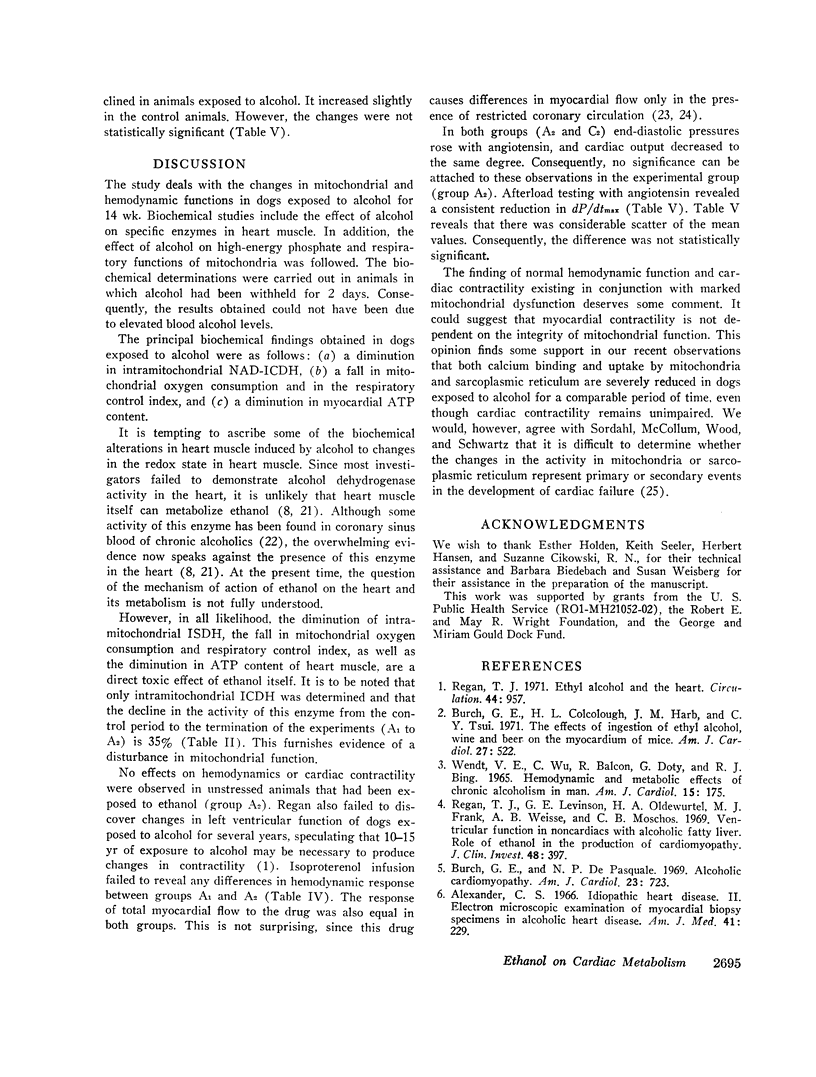
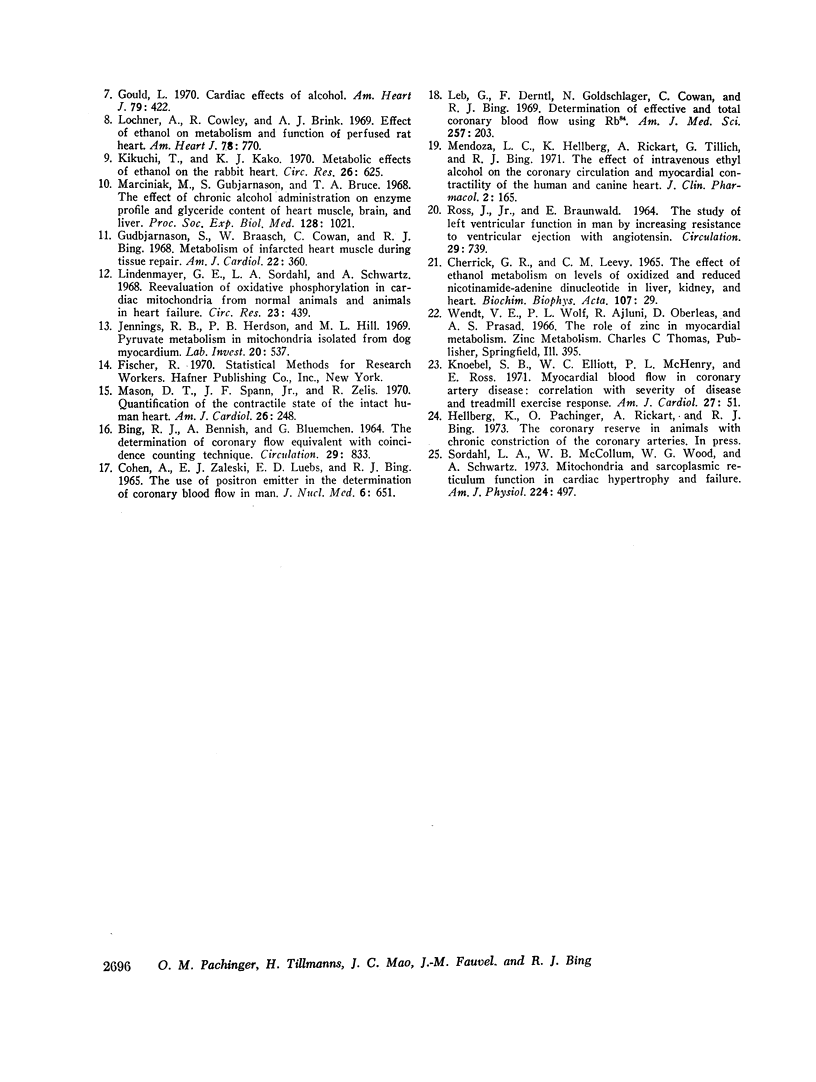
Selected References
These references are in PubMed. This may not be the complete list of references from this article.
- Alexander C. S. Idiopathic heart disease. II. Electron microscopic examination of myocardial biopsy specimens in alcoholic heart disease. Am J Med. 1966 Aug;41(2):229–234. doi: 10.1016/0002-9343(66)90018-0. [DOI] [PubMed] [Google Scholar]
- BING R. J., BENNISH A., BLUEMCHEN G., COHEN A., GALLAGHER J. P., ZALESKI E. J. THE DETERMINATION OF CORONARY FLOW EQUIVALENT WITH COINCIDENCE COUNTING TECHNIC. Circulation. 1964 Jun;29:833–846. doi: 10.1161/01.cir.29.6.833. [DOI] [PubMed] [Google Scholar]
- Burch G. E., Colcolough H. L., Harb J. M., Tsui C. Y. The effect of ingestion of ethyl alcohol, wine and beer on the myocardium of mice. Am J Cardiol. 1971 May;27(5):522–528. doi: 10.1016/0002-9149(71)90415-2. [DOI] [PubMed] [Google Scholar]
- Cherrick G. R., Leevy C. M. The effect of ethanol metabolism on levels on oxidized and reduced nicotinamide-adenine dinucleotide in liver, kidney, and heart. Biochim Biophys Acta. 1965 Aug 24;107(1):29–37. doi: 10.1016/0304-4165(65)90385-5. [DOI] [PubMed] [Google Scholar]
- Cohen A., Zaleski E. J., Luebs E. D., Bing R. J. The use of positron emitter in the determination of coronary blood flow in man. J Nucl Med. 1965 Sep;6(9):651–666. [PubMed] [Google Scholar]
- Gould L. Cardiac effects of alcohol. Am Heart J. 1970 Mar;79(3):422–425. doi: 10.1016/0002-8703(70)90430-8. [DOI] [PubMed] [Google Scholar]
- Gudbjarnason S., Braasch W., Cowan C., Bing R. J. Metabolism of infarcted heart muscle during tissue repair. Am J Cardiol. 1968 Sep;22(3):360–369. doi: 10.1016/0002-9149(68)90120-3. [DOI] [PubMed] [Google Scholar]
- Jennings R. B., Herdson P. B., Hill M. L. Pyruvate metabolism in mitochondria isolated from dog myocardium. Lab Invest. 1969 Jun;20(6):537–547. [PubMed] [Google Scholar]
- Kikuchi T., Kako K. J. Metabolic effects of ethanol on the rabbit heart. Circ Res. 1970 May;26(5):625–634. doi: 10.1161/01.res.26.5.625. [DOI] [PubMed] [Google Scholar]
- Knoebel S. B., Elliott W. C., McHenry P. L., Ross E. Myocardial blood flow in coronary artery disease. Correlation with severity of disease and treadmill exercise response. Am J Cardiol. 1971 Jan;27(1):51–58. doi: 10.1016/0002-9149(71)90082-8. [DOI] [PubMed] [Google Scholar]
- Leb G., Derntl F., Goldschlager N., Cowan C., Bing R. J. Determination of effective and total coronary blood flow using Rb84. Am J Med Sci. 1969 Apr;257(4):203–217. doi: 10.1097/00000441-196904000-00001. [DOI] [PubMed] [Google Scholar]
- Lindenmayer G. E., Sordahl L. A., Schwartz A. Reevaluation of oxidative phosphorylation in cardiac mitochondria from normal animals and animals in heart failure. Circ Res. 1968 Sep;23(3):439–450. doi: 10.1161/01.res.23.3.439. [DOI] [PubMed] [Google Scholar]
- Lochner A., Cowley R., Brink A. J. Effect of ethanol on metabolism and function of perfused rat heart. Am Heart J. 1969 Dec;78(6):770–780. doi: 10.1016/0002-8703(69)90443-8. [DOI] [PubMed] [Google Scholar]
- Mason D. T., Spann J. F., Jr, Zelis R. Quantification of the contractile state of the intact human heart. Maximal velocity of contractile element shortening determined by the instantaneous relation between the rate of pressure rise and pressure in the left ventricle during isovolumic systole. Am J Cardiol. 1970 Sep;26(3):248–257. doi: 10.1016/0002-9149(70)90791-5. [DOI] [PubMed] [Google Scholar]
- Mendoza L. C., Hellberg K., Rickart A., Tillich G., Bing R. J. The effect of intravenous ethyl alcohol on the coronary circulation and myocardial contractility of the human and canine heart. J Clin Pharmacol New Drugs. 1971 May-Jun;11(3):165–176. [PubMed] [Google Scholar]
- ROSS J., Jr, BRAUNWALD E. THE STUDY OF LEFT VENTRICULAR FUNCTION IN MAN BY INCREASING RESISTANCE TO VENTRICULAR EJECTION WITH ANGIOTENSIN. Circulation. 1964 May;29:739–749. doi: 10.1161/01.cir.29.5.739. [DOI] [PubMed] [Google Scholar]
- Regan T. J. Ethyl alcohol and the heart. Circulation. 1971 Nov;44(5):957–963. doi: 10.1161/01.cir.44.5.957. [DOI] [PubMed] [Google Scholar]
- Regan T. J., Levinson G. E., Oldewurtel H. A., Frank M. J., Weisse A. B., Moschos C. B. Ventricular function in noncardiacs with alcoholic fatty liver: role of ethanol in the production of cardiomyopathy. J Clin Invest. 1969 Feb;48(2):397–407. doi: 10.1172/JCI105997. [DOI] [PMC free article] [PubMed] [Google Scholar]
- Sordahl L. A., McCollum W. B., Wood W. G., Schwartz A. Mitochondria and sarcoplasmic reticulum function in cardiac hypertrophy and failure. Am J Physiol. 1973 Mar;224(3):497–502. doi: 10.1152/ajplegacy.1973.224.3.497. [DOI] [PubMed] [Google Scholar]
- WENDT V. E., WU C., BALCON R., DOTY G., BING R. J. HEMODYNAMIC AND METABOLIC EFFECTS OF CHRONIC ALCOHOLISM IN MAN. Am J Cardiol. 1965 Feb;15:175–184. doi: 10.1016/0002-9149(65)90452-2. [DOI] [PubMed] [Google Scholar]


